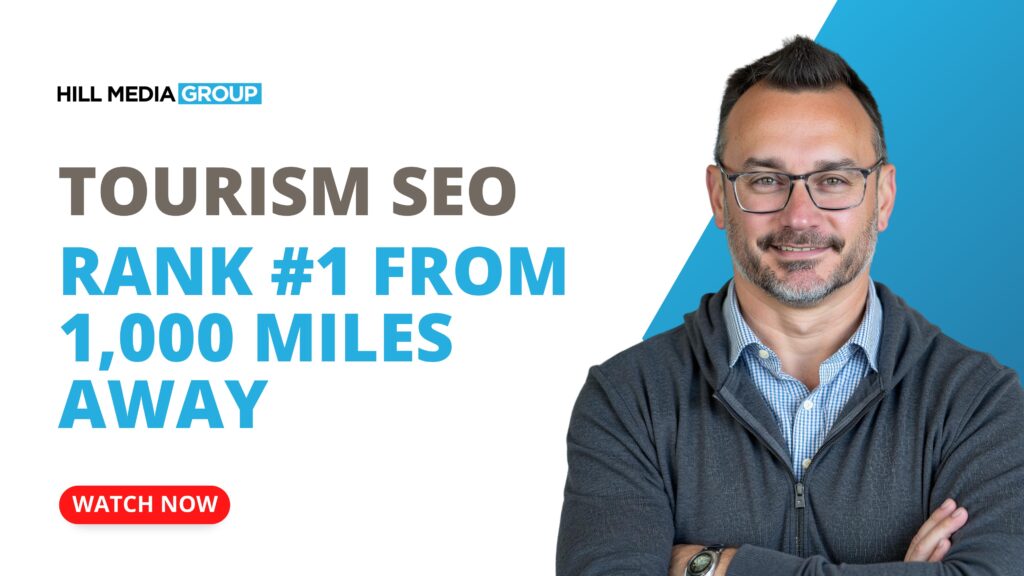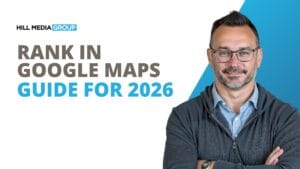How to Rank for Non-Local Travelers Planning Trips to Your Destination
In the competitive world of tourism, having a strong online presence isn’t just helpful—it’s essential for attracting visitors to your destination. This is especially true for businesses near popular attractions like Glacier National Park, where most of your potential customers are planning their trips from far away.
As the digital landscape evolves, travelers increasingly rely on search engines during their research and planning phases, often months before their actual visit. With projections showing that 76% of tourism revenue will be generated through online sales by 2028, mastering search engine optimization (SEO) is no longer optional—it’s a business necessity.
Understanding Your Unique SEO Challenge
Unlike local service businesses that primarily target nearby residents, tourism companies face a distinct challenge: reaching people who are physically distant from your business but planning to visit your area. This requires a specialized approach to SEO that addresses how travelers search, plan, and book their adventures.
The Tourism Search Journey
Potential visitors go through several stages when planning a trip, and your SEO strategy needs to capture them at each point:
- Inspiration Phase: Broad searches like “best places to visit in Montana” or “most beautiful national parks”
- Planning Phase: More specific searches such as “things to do near Glacier National Park” or “must-see attractions in Kalispell”
- Logistics Phase: Detailed searches including “helicopter tours Glacier National Park cost” or “best time to visit Glacier in July”
- Booking Phase: Direct searches for “book Glacier helicopter tour” or “Kalispell river rafting reservations”
By understanding this journey, you can create content that meets travelers where they are in their planning process.
Keyword Strategy: The Foundation of Tourism SEO
Focus on Long-Tail Keywords
The travel industry is highly competitive, with major travel sites dominating general search terms. For local tourism businesses, targeting specific long-tail keywords offers a strategic advantage:
- Instead of “Montana tourism” → “best hiking trails in Glacier National Park for families”
- Instead of “helicopter tours” → “scenic helicopter tours over Glacier National Park waterfalls”
- Instead of “river rafting” → “white water rafting trips near Kalispell for beginners”
These longer, more specific phrases typically have less competition while attracting highly qualified visitors with clear intent.
Implement Seasonal Keyword Targeting
Tourism businesses should adjust their keyword strategy throughout the year to capture seasonal interest:
- Spring: “spring wildflowers Glacier National Park,” “best time to visit Glacier in May”
- Summer: “Glacier National Park without crowds,” “family-friendly activities Kalispell summer”
- Fall: “fall colors hiking Glacier National Park,” “best September activities Montana”
- Winter: “winter activities near Kalispell Montana,” “snowshoeing tours Glacier”
Research shows that travelers begin researching well in advance of their actual trips. Plan your seasonal content at least 3-4 months before peak season to capture these early planners.
Content Creation: Becoming a Trusted Destination Resource
Develop Comprehensive Destination Guides
Create in-depth guides about your destination that answer the questions travelers are asking:
- Detailed information about specific attractions and activities
- Insider tips that demonstrate your local expertise
- Practical information like operating hours, prices, and what to expect
- Seasonal variations and recommendations for different traveler types
These comprehensive resources not only help with rankings but position your business as an authority on the area.
Create Location-Specific Content
Develop dedicated pages for different areas within your region. For a business near Glacier National Park, this might include:
- Separate pages for different park entrances (West Glacier, East Glacier, etc.)
- Content about nearby towns (Kalispell, Whitefish, Columbia Falls)
- Pages for specific activities in different locations (fishing spots, hiking trailheads)
Each page should contain unique content about what makes that area special and how your business serves visitors there.
Implement a Conversational Content Strategy
With the rise of voice search, tourism businesses should develop content that mirrors natural speech patterns:
- Create FAQ sections that directly answer common questions
- Write in a conversational tone that matches how people speak
- Address specific questions travelers might ask, such as “What’s the best time to take a helicopter tour of Glacier National Park?”
Technical SEO: Creating a Solid Foundation
Mobile Optimization is Non-Negotiable
Nearly half of all smartphone users are comfortable researching, booking, and planning their entire trips using mobile devices. Ensure your website:
- Implements responsive design that works across all devices
- Loads quickly, especially on mobile networks
- Features easy-to-use booking forms and navigation on small screens
- Uses larger tap targets for important buttons and links
Implement Structured Data for Rich Results
Schema markup helps search engines understand your content and can lead to enhanced listings in search results:
- Use TouristDestination schema for attraction information
- Implement Event schema for scheduled tours or seasonal events
- Add FAQ schema to answer common visitor questions
- Include HowTo schema for activity guides or itineraries
Properly implemented schema can improve click-through rates by making your listings stand out with additional information directly in search results.
Optimize Page Speed
Fast loading speeds are crucial for both SEO and user experience. Tourism businesses with fast-loading websites (under 3 seconds) see significantly higher conversion rates:
- Optimize image sizes without sacrificing visual quality
- Minimize unnecessary code and scripts
- Implement browser caching
- Consider using a Content Delivery Network (CDN)
Building Authority Through Strategic Backlinks
Partner with Travel Publications and Influencers
Developing partnerships with travel publications and influencers can generate valuable backlinks:
- Offer complimentary experiences in exchange for honest reviews
- Look for influencers with engaged followers interested in outdoor adventures
- Provide unique experiences that publications would want to feature
These partnerships not only build backlinks but also increase brand awareness and trust.
Create Link-Worthy Content
Developing high-quality, unique content that others want to reference can naturally attract backlinks:
- Create comprehensive guides to your destination
- Publish up-to-date statistical information about local tourism
- Develop interactive maps showing trails or points of interest
- Share stunning photography or virtual tours of your experiences
Leveraging Local SEO Despite Targeting Non-Local Visitors
Optimize Your Google Business Profile
A well-optimized Google Business Profile helps your tourism business appear in local searches and provides essential information to potential visitors:
- Ensure your business category, hours, and description are accurate
- Add high-quality photos of your experiences
- Actively manage and respond to reviews
- Use Google Posts to highlight seasonal offerings or special events
Create Service Area Pages
Recent changes to Google’s local search results show more localized service area pages in SERPs instead of generic homepages. Develop dedicated pages for:
- Different services or experiences you offer
- Specific locations you serve
- Seasonal variations of your offerings
Each page should contain unique content addressing the specific needs of visitors to that area.
Measuring Success and Adapting Your Strategy
Track Seasonal Performance
Tourism businesses should analyze performance metrics across different seasons:
- Monitor which keywords drive the most qualified traffic
- Track conversion rates by season and visitor location
- Identify emerging trends in travel search behavior
Use this data to refine your strategy and allocate resources to the most effective channels.
Analyze User Behavior
Understanding how potential visitors interact with your website provides valuable insights:
- Which pages have the highest engagement?
- Where do visitors commonly exit your site?
- What content leads to the most bookings or inquiries?
Use this information to optimize the user experience and improve conversion rates.
Conclusion: Building Your Tourism SEO Roadmap
For tourism businesses, effective SEO requires understanding the unique way travelers research and plan their trips. By implementing a comprehensive strategy that addresses both technical fundamentals and tourism-specific opportunities, you can improve your visibility in search results and connect with potential visitors months before they arrive at your destination.
Remember that SEO is not a one-time project but an ongoing process of refinement and adaptation. By consistently creating valuable content, optimizing for the right keywords, and building your online authority, you’ll establish your business as a trusted resource for travelers planning their next adventure.
This article was created by Hill Media Group as part of our commitment to empowering small businesses with education-first digital marketing strategies. If you’d like a personalized Digital Growth Plan for your tourism business, schedule a free 15-minute Growth Strategy Session today.




